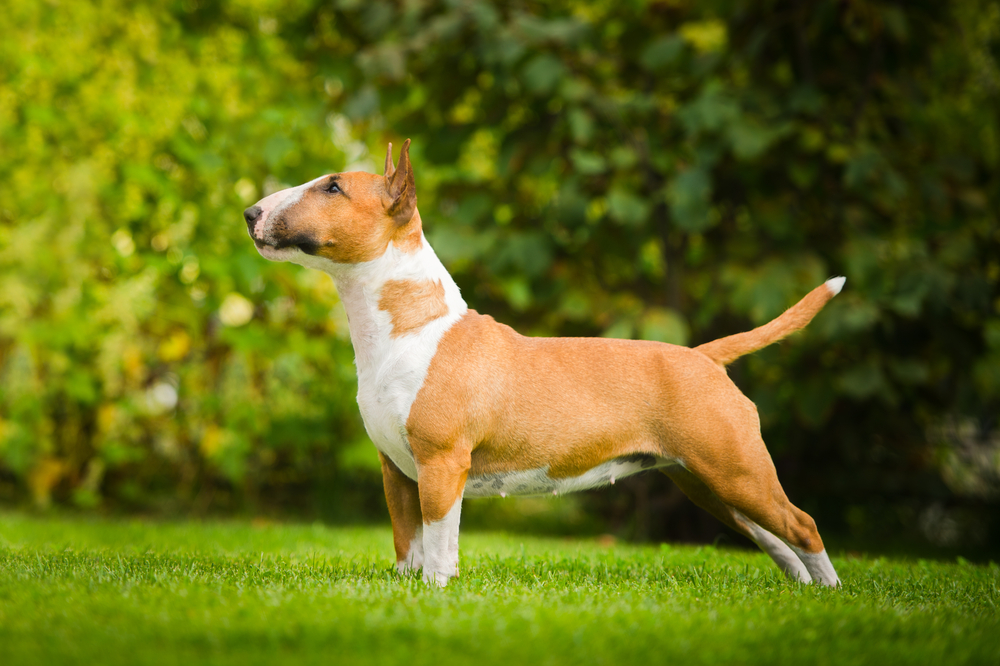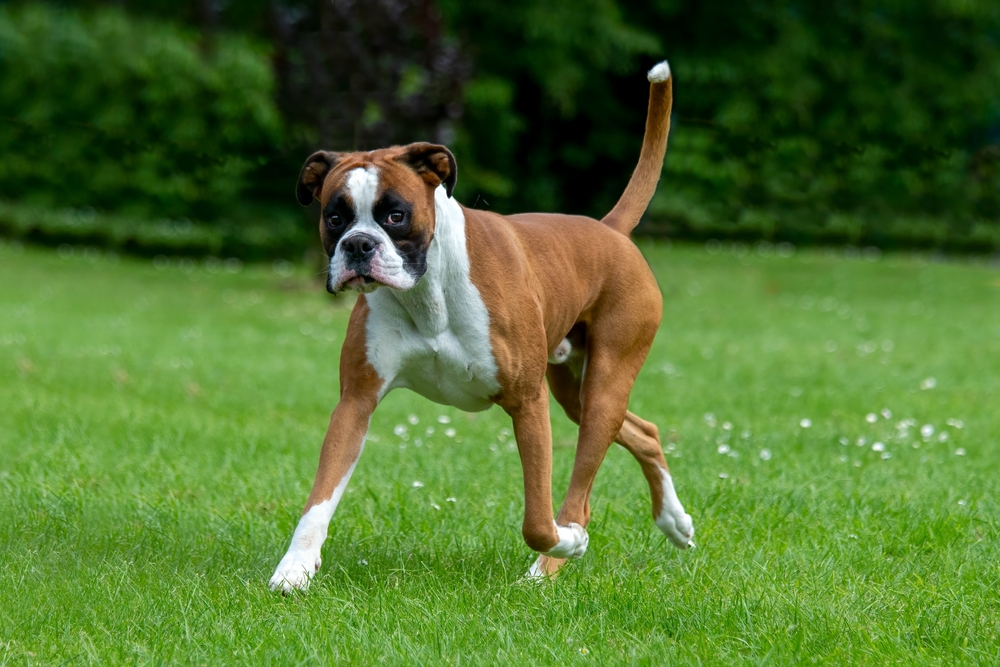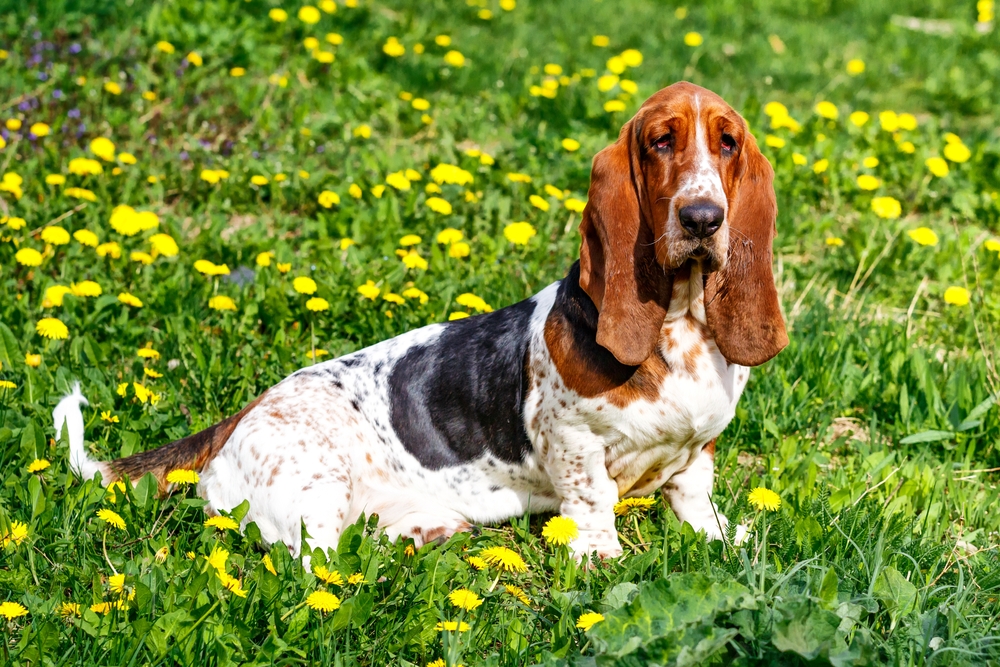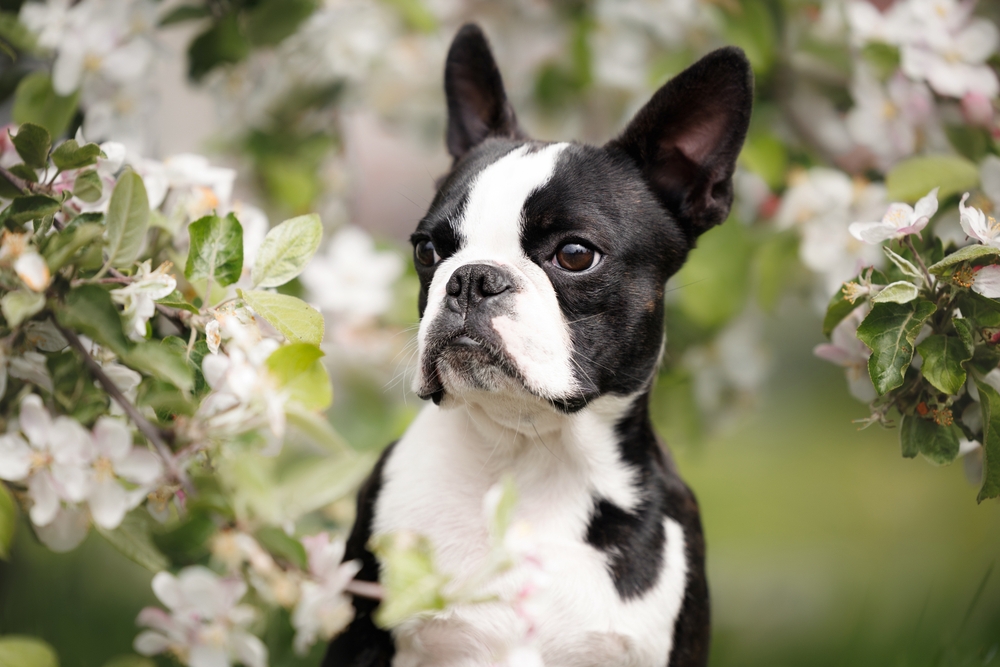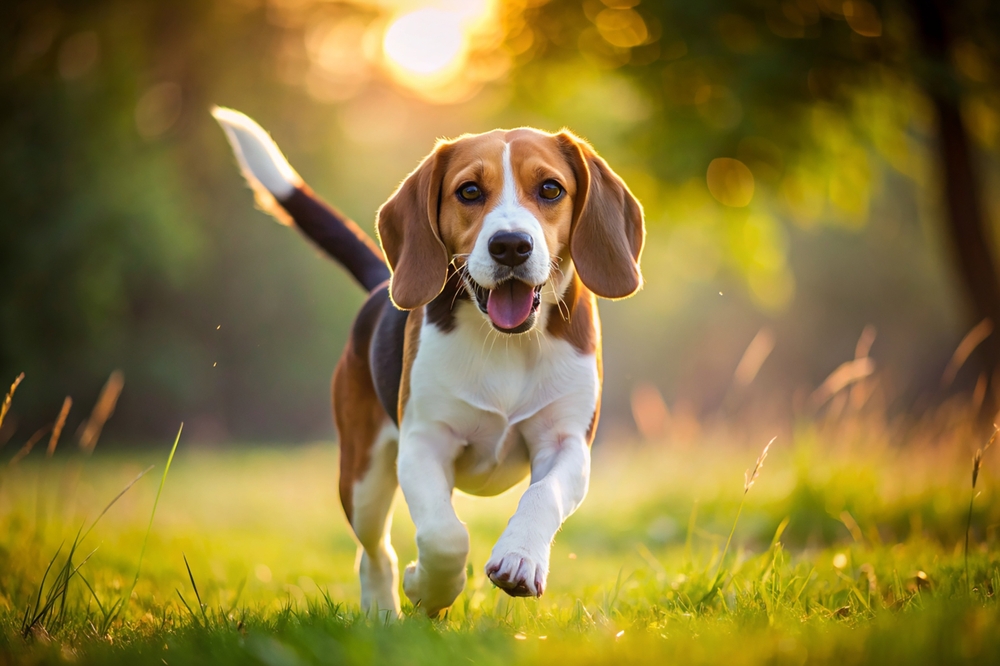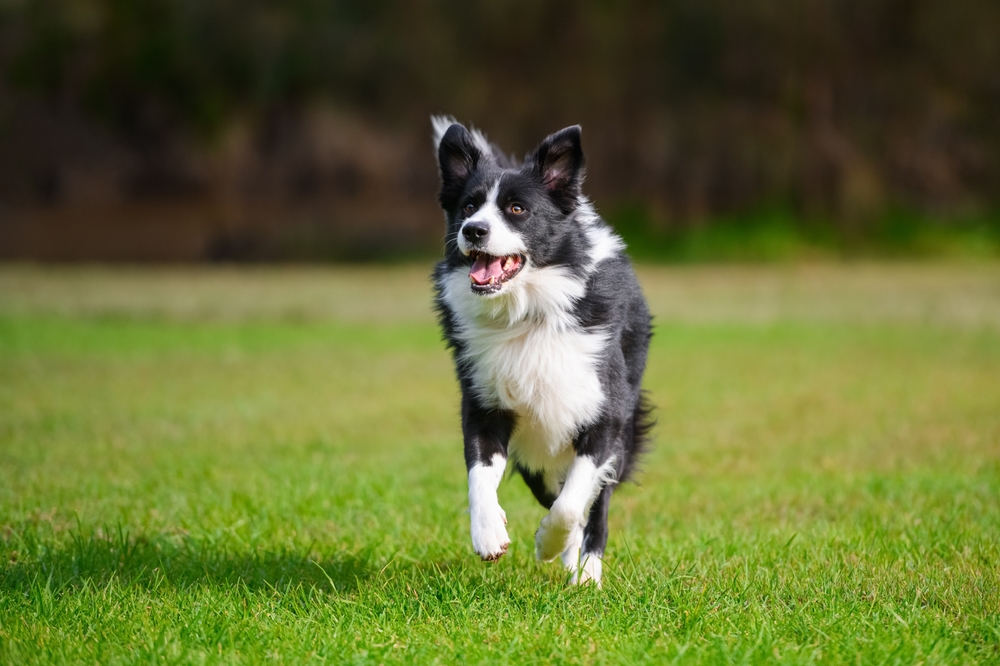The Bull Terrier’s closest relatives are the Miniature Bull Terrier and other terrier-bulldog crosses, such as the Staffordshire Bull Terrier. They all share ancestry from 19th-century England, where Bulldogs were crossed with terriers to combine strength and agility.
About
The Bull Terrier is a distinctive and spirited breed, instantly recognizable by its unique egg-shaped head, triangular eyes, and muscular build. Originating in England during the 19th century, the Bull Terrier was developed by crossing Bulldogs with various terriers, later refined with the addition of the White English Terrier and Dalmatian. Initially bred for dog sports and as a fashionable companion, it has evolved into a loyal, entertaining, and affectionate family dog. The Bull Terrier’s scientific name is Canis lupus familiaris, and it belongs to the family Canidae.
Bull Terriers are medium-sized, typically standing 21–22 inches (53–56 cm) at the shoulder and weighing 50–70 pounds (23–32 kg). Their smooth, short coat can come in solid white or various colors, including brindle, black, red, and tricolor. Their hallmark is the strong, oval-shaped head with no stop, paired with small, deep-set eyes that give them a mischievous, determined expression. Their well-muscled bodies and sturdy legs make them both powerful and agile.
These dogs are known for their bold, energetic, and fun-loving personalities. While they are intelligent and trainable, Bull Terriers can be independent thinkers, requiring consistent, positive training methods. They are deeply loyal to their families, often forming strong attachments, and are generally good with children when properly socialized. However, their exuberance and strength mean they need supervision around small children and other pets.
Bull Terriers thrive in active households where they can enjoy daily exercise, play, and mental challenges. They are also known for their clownish antics, often delighting their owners with their playful and sometimes stubborn nature. With proper training, socialization, and affection, the Bull Terrier becomes a devoted and entertaining companion.
Physical Characteristics
Bull Terriers are medium-sized, muscular dogs easily recognized by their distinctive head shape and sturdy build:
Coat: They have a short, flat, and glossy coat that is harsh to the touch. Coat colors can include pure white (with or without markings), brindle, fawn, black, red, or tri-color. In white Bull Terriers, skin pigmentation or colored markings on the head are common.
Face: The hallmark of the Bull Terrier is its egg-shaped head when viewed from the front, with a gently curving profile from the top of the skull to the nose. Their small, triangular, deep-set eyes give a keen, mischievous expression. The ears are small, thin, and carried erect.
Body: Compact yet powerful, Bull Terriers have a strong, arched neck leading into well-sprung ribs and a short, level back. The chest is broad and deep, and the shoulders are muscular but well-laid back for agility.
Tail: The tail is short, set low, and carried horizontally. It tapers to a fine point and is never docked.
Size:
-
Length (Body): Approximately 20 to 24 in (51 to 61 cm) from chest to rump.
-
Shoulder Height:
-
Standard Bull Terrier: 21 to 22 in (53 to 56 cm)
-
Miniature Bull Terrier: up to 14 in (35.5 cm)
-
-
Weight:
-
Standard Bull Terrier: 50 to 70 lbs (23 to 32 kg)
-
Miniature Bull Terrier: 20 to 35 lbs (9 to 16 kg)
-
Bull Terriers’ physical characteristics combine strength, agility, and distinctive looks, making them instantly recognizable. Their egg-shaped head, muscular frame, and confident stance reflect their history as both tenacious working dogs and affectionate companions.
Reproduction
The reproductive cycle of Bull Terriers follows the general domestic dog pattern, but their build and genetics require careful breeding management:
1. Mating and Courtship:
Bull Terriers typically reach sexual maturity between 6 and 9 months, though responsible breeding is delayed until females are at least 18–24 months old and fully matured. Courtship behaviors include play, scent marking, and mutual interest between the mating pair.
2. Estrus Cycle:
Females usually go into heat twice a year, with each cycle lasting about 2–3 weeks. The optimal breeding period typically falls between days 9–14, though ovulation timing can vary.
3. Gestation:
The gestation period averages 63 days (about 9 weeks). Pregnant females require a high-quality, nutrient-rich diet and moderate exercise to maintain muscle tone. Veterinary supervision is recommended to monitor fetal development and maternal health.
4. Birth of Puppies:
Typical litter sizes range from 4 to 8 puppies, though larger or smaller litters occur. Due to their relatively broad skulls, some females may require veterinary assistance during whelping, though natural births are common in healthy, well-bred females.
5. Care and Nurturing:
Newborn puppies are blind and deaf at birth, fully dependent on the mother for warmth, feeding, and cleaning. They open their eyes around 10–14 days and begin to crawl and walk shortly thereafter.
6. Weaning and Socialization:
Weaning begins around 4 weeks, with gradual introduction to soft puppy food. Socialization from 4–12 weeks is crucial for Bull Terriers to develop into well-mannered adults, as the breed is energetic and strong-willed.
7. Independence:
By 8–10 weeks, puppies are typically ready for rehoming, though some breeders prefer to keep them until 12 weeks for additional training and temperament evaluation.
Because Bull Terriers are prone to certain inherited conditions—such as deafness (especially in white Bull Terriers), heart disease, and patellar luxation—responsible breeders perform comprehensive health screenings before mating.
Lifespan
Lifespan in the Home Environment:
Bull Terriers typically live 11 to 13 years, with some reaching 14 years or more when provided with proper diet, exercise, and veterinary care.
Lifespan in Active or Working Roles:
When used for high-energy activities such as agility, competitive obedience, or protection sports, Bull Terriers often maintain excellent fitness but may face a slightly higher risk of joint or muscle injuries. With attentive care, their lifespan is generally similar to those kept solely as companion animals.
Common Health Factors Affecting Lifespan:
-
Deafness: Especially prevalent in white Bull Terriers, affecting one or both ears.
-
Heart Disease: Conditions like mitral valve disease and aortic stenosis can occur in the breed.
-
Kidney Disease: Polycystic kidney disease and other renal issues may develop with age.
-
Skin Allergies: Prone to environmental and food-related skin problems.
-
Patellar Luxation: Can affect mobility if not managed.
-
Lens Luxation & Other Eye Disorders: Can lead to vision problems in later life.
Ways to Maximize Lifespan:
-
Provide a balanced, high-quality diet to maintain optimal weight and muscle tone.
-
Schedule regular veterinary checkups, including hearing, heart, and kidney screenings.
-
Maintain daily exercise for both mental stimulation and physical health.
-
Begin socialization and training early to prevent behavioral issues that could lead to injury or stress.
With proper care and health monitoring, Bull Terriers can enjoy long, active lives as energetic, loyal, and loving companions.
Eating Habits
Diet:
Bull Terriers thrive on a balanced, high-quality diet formulated for medium-sized, active dogs. This should include lean animal protein, healthy fats, complex carbohydrates, vitamins, and minerals. Common protein sources include chicken, beef, lamb, or fish, which help maintain their muscular build and energy levels.
Feeding Schedule:
-
Puppies (under 6 months): 3–4 small meals daily to support rapid growth and energy needs.
-
Adults: 2 meals per day to maintain steady energy and prevent overeating.
-
Seniors: May require lower-calorie meals while keeping protein levels adequate for muscle maintenance.
Eating Behavior:
Bull Terriers generally have healthy appetites and can be prone to overeating if portions aren’t controlled. They can also be opportunistic eaters, meaning they may scavenge if given the chance. Some individuals have food sensitivities or allergies that require special diets.
Special Considerations:
-
Skin & Coat Health: Omega-3 and omega-6 fatty acids can help reduce skin inflammation and improve coat condition, especially in allergy-prone individuals.
-
Weight Management: Avoiding excess calories helps prevent obesity, which can strain joints and exacerbate heart conditions.
-
Digestive Health: Introducing dietary changes gradually can reduce the risk of gastrointestinal upset.
-
Food Allergies: White Bull Terriers are sometimes more prone to dietary allergies, which may require limited-ingredient or hypoallergenic food.
Treats and Extras:
Healthy options include carrot sticks, blueberries, green beans, and apple slices (without seeds). Avoid high-fat, high-salt, or sugary human foods.
A consistent, portion-controlled diet—matched to their energy level—helps keep Bull Terriers lean, muscular, and ready for their typically active, playful lifestyle.
Uniqueness
The Bull Terrier is a one-of-a-kind breed with striking looks and a bold personality that sets it apart from all other dogs:
Distinctive Head Shape:
The breed’s signature egg-shaped head with a gently curving profile is unlike any other dog, giving it an instantly recognizable silhouette.
Triangular Eyes:
Bull Terriers are the only breed with true triangular-shaped eyes, creating a sharp, mischievous, and intelligent expression.
Playful Yet Determined Personality:
They combine clownish humor and affection with a tenacious, confident nature—traits that stem from their history as both companion and working dogs.
Athletic Power in a Compact Frame:
Muscular and agile, Bull Terriers are built for both speed and strength, excelling in activities from agility trials to playful backyard games.
Color Variety with Iconic Whites:
While pure white Bull Terriers are the most famous, they also come in brindle, red, fawn, black, tri-color, and patterned coats, often with striking head markings.
High Energy with Strong Bonds:
They are extremely people-oriented, often forming intense bonds with their owners, and thrive on daily interaction and activity.
Historic Role:
Originating in 19th-century England, Bull Terriers were bred by crossing Bulldogs with terriers to create a strong yet agile dog for sport and companionship.
Bull Terriers’ blend of unique appearance, spirited personality, and deep loyalty makes them a standout among companion breeds, beloved by those who appreciate their bold charm and boundless energy.
Be the First to Share Photos of This Species.
FAQ’s
1. What is the closest species to the Bull Terrier?
2. How does the Bull Terrier compare to other terrier breeds?
Bull Terriers are generally more muscular and powerful than most terriers, with a playful, clown-like personality that balances their boldness.
While breeds like the Staffordshire Bull Terrier and American Pit Bull Terrier share similar energy and tenacity, Bull Terriers stand out with their egg-shaped head, triangular eyes, and a slightly more comical, people-focused demeanor.
3. What national parks provide the best chances to see a Bull Terrier?
Bull Terriers are a domesticated breed and are not found in the wild. However, they may be seen in dog-friendly national and state parks where leashed pets are welcome, such as:
-
Acadia National Park (Maine) – Carriage roads and select trails allow leashed dogs.
-
Shenandoah National Park (Virginia) – Numerous pet-friendly trails and campgrounds.
-
Cuyahoga Valley National Park (Ohio) – Offers dog-friendly paths and scenic walking areas.
Since Bull Terriers are energetic and social, you’re most likely to see them in active recreation areas, agility fields, or community dog parks rather than in natural wildlife habitats.



































































